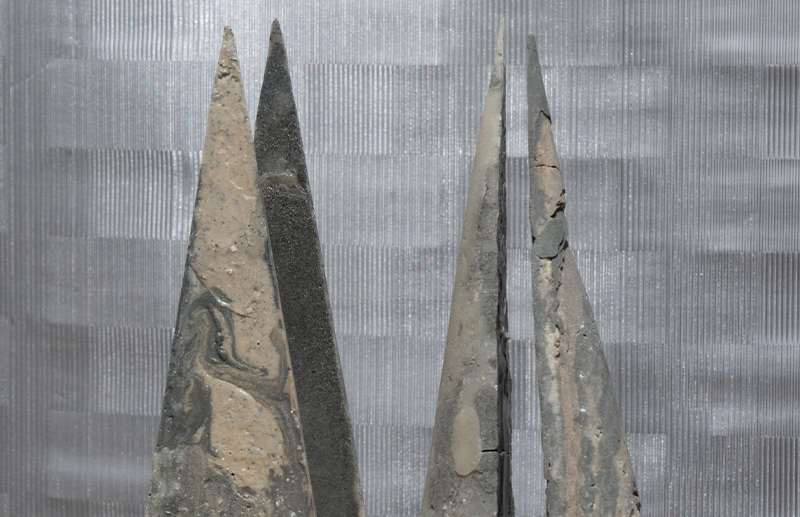Mourn, Kaumera Kimono, Waterschatten – Nienke Hoogvliet
Can polluted waste materials from one industry be a sustainable raw material in another context? The waste product Kaumera has a very special property: it consolidates chemical processes with other materials. It is a true chameleon.
The wide availability of clear drinking water is the result of an extensive process of water purification. Designer Nienke Hoogvliet researched the materials that are removed from the water, and their potentially useful properties. In commission of the Dutch Water authorities, she found three new purposes for waste materials from the purification process: OHA, Kaumera and cellulose. The results of their collaboration are on show at Kazerne.
Mourn:
A by-product of water treatment is PHA (poly hydroxy alkanoate), a natural material with the properties of plastic. Yet unlike fossil plastics, bioplastics are biodegradable. Hoogvliet designed an urn from PHA, which can hold the ashes of a loved one before it is returned to nature. Both the urn and the ashes are degradable, without ecological damage.
Kaumera Kimono:
Kaumera is a versatile bio-based raw material with the special property that it enhances the chemical properties of other materials, for instance as a color enhancer for dyeing textiles. Through giving Kaumera this new purpose, the textile industry needs to use less chemical dyes. Here, Hoogvliet has used Kaumera to dye a kimono. This garment is traditionally passed on for generations, cherished and valued.
Waterschatten:
Every year 180.000 tons of toilet paper is flushed down the toilets of the Netherlands. This equals 180.000 trees. Nienke Hoogvliet found a way to reuse this material as the base material for a table, a light and decorative dishes.

